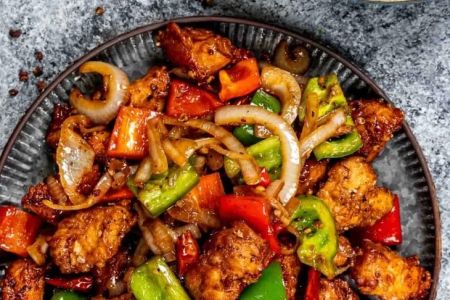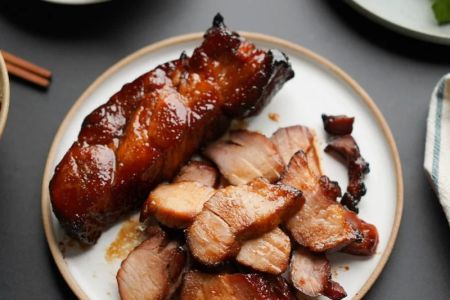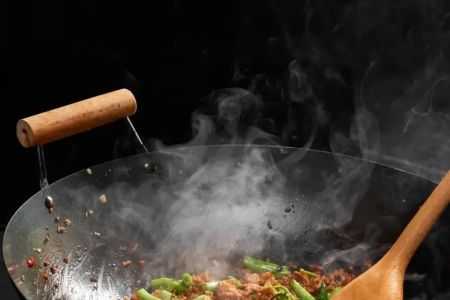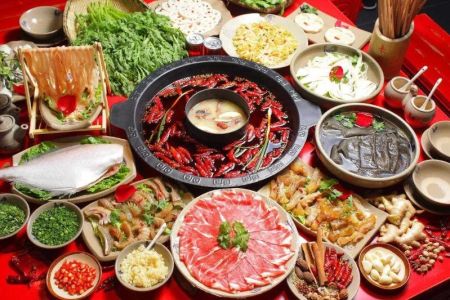How to Make Chinese Stir Fry Like a Restaurant
When it comes to Chinese food, few dishes are as universally loved as stir fry. The smoky, savory flavors, the vibrant vegetables, and the perfectly cooked protein come together to create a dish that’s both satisfying and delicious. But if you're like me, you’ve probably wondered why your homemade stir fry never seems to taste quite as good as what you get at a restaurant. The truth is, there are a few key techniques and ingredients that restaurant chefs use to elevate their stir fry dishes. In this guide, I’m going to share some tips and tricks on how to make Chinese stir fry like a restaurant right in your own kitchen.
1. Start with the Right Equipment
One of the secrets to making stir fry like a pro is using the right equipment. At Chinese restaurants, chefs often use a wok, which is perfect for high-heat cooking and evenly distributing heat. If you don’t have a wok, a large skillet or sauté pan will work fine, but a wok gives you that authentic smoky flavor called "wok hei," which is hard to replicate without it.
When choosing a wok, look for one with a flat bottom if you're using it on an electric stove, or a round-bottomed wok if you're using gas. Woks are typically made from carbon steel, which heats up quickly and evenly, allowing you to stir fry ingredients quickly without overcooking them.
2. Use High-Quality Ingredients
To make stir fry like the ones you get at restaurants, you need to focus on using high-quality ingredients. Fresh vegetables, such as bell peppers, broccoli, carrots, and snap peas, add color, texture, and flavor. You also want to make sure you’re using the best cuts of meat, whether it’s chicken, beef, or shrimp. Avoid pre-cut or frozen vegetables as they can affect the texture of the dish.
Additionally, the seasoning ingredients are just as important. Soy sauce, oyster sauce, hoisin sauce, and sesame oil are the foundation of most Chinese stir fry recipes. Make sure you're using authentic versions of these ingredients, as they add depth and umami to your stir fry. A good soy sauce is crucial for achieving the perfect balance of salty and savory flavors.
3. Prep All Your Ingredients Before You Start Cooking
One thing I learned the hard way is that stir fry moves quickly. Once you start cooking, you won’t have time to chop vegetables or measure out sauces. To make stir fry like a restaurant, you need to prep all your ingredients ahead of time. This means slicing your vegetables, marinating your protein, and having your sauces ready to go.
Keep in mind that the size of your ingredients matters. Vegetables should be cut into uniform sizes so they cook evenly. If you’re using meat, slice it thinly against the grain to ensure it cooks quickly and stays tender. For a restaurant-style stir fry, you’ll want everything to be ready to toss in the wok as soon as the oil heats up.
4. Master the Art of High-Heat Cooking
The key to achieving that perfect stir fry texture is cooking at high heat. At a restaurant, chefs use commercial-grade woks and stoves that get incredibly hot. To replicate this at home, you need to get your pan or wok as hot as possible before adding the oil. This high heat helps to sear the ingredients quickly, locking in flavors and keeping everything crisp, rather than steaming or overcooking them.
Once the oil is hot, you can add your protein first. Stir it quickly to prevent sticking and ensure it cooks evenly. After the protein is browned and cooked through, remove it from the pan and set it aside. Then, quickly cook the vegetables. Remember to keep everything moving in the pan to avoid burning and to maintain that vibrant color and crunch.
5. Don’t Overcrowd the Pan
Another common mistake when making stir fry at home is overcrowding the pan. When you overcrowd the pan, the ingredients release moisture and essentially steam rather than sear. To avoid this, make sure you cook in batches. If you're making a large stir fry, cook the protein and vegetables separately, and combine them at the end. This way, you can ensure everything gets a nice sear and retains its texture.
In Chinese restaurants, the stir fry is often cooked in smaller batches, which allows for the high-heat cooking needed to achieve that perfect stir fry texture. Cooking in batches will give you that restaurant-style stir fry that’s crispy and flavorful, with no soggy vegetables or overcooked meat.
6. Add Flavor with the Right Sauces and Seasonings
Now comes the fun part: the flavor! At a restaurant, the sauce is often the highlight of a stir fry. A good stir fry sauce is a balance of salty, sweet, and umami flavors. Common stir fry sauces include soy sauce, oyster sauce, hoisin sauce, and sometimes a bit of sugar for sweetness.
To create the perfect stir fry sauce, combine a few tablespoons of soy sauce, a splash of oyster sauce, and a drizzle of sesame oil in a small bowl. Add a teaspoon of cornstarch to thicken the sauce, and if you want a little heat, throw in some chili paste or Sriracha. Mix everything together and set aside. Once your vegetables and protein are cooked, add the sauce to the pan, and toss everything together to coat evenly.
7. Finish with Garnishes and Serve Immediately
Once your stir fry is cooked and coated in that delicious sauce, it’s time to garnish. A sprinkle of sesame seeds, chopped green onions, or a dash of red pepper flakes can elevate the dish even further. Don’t forget to serve your stir fry immediately after cooking. The beauty of stir fry is that it’s best enjoyed fresh and hot, right off the stove.
Pair your stir fry with steamed rice or noodles for a complete meal, and you’ll have a restaurant-quality dish at home in no time. With a few simple tips and some practice, you can master the art of stir frying and impress your friends and family with your culinary skills.
SEO Title: How to Make Chinese Stir Fry Like a Restaurant at Home SEO Keywords: Chinese stir fry, restaurant stir fry, how to stir fry, best stir fry tips, homemade stir fry, cooking stir fry, Chinese food recipes SEO Description: Learn how to make Chinese stir fry at home like a restaurant chef. Discover expert tips and tricks for perfect stir fry every time with our step-by-step guide.





![Top Chinese Restaurants for Authentic Cantonese Cuisine in [Your City]](https://img.gochinarose.com/d33/2507/4157910400_450x300.webp)
